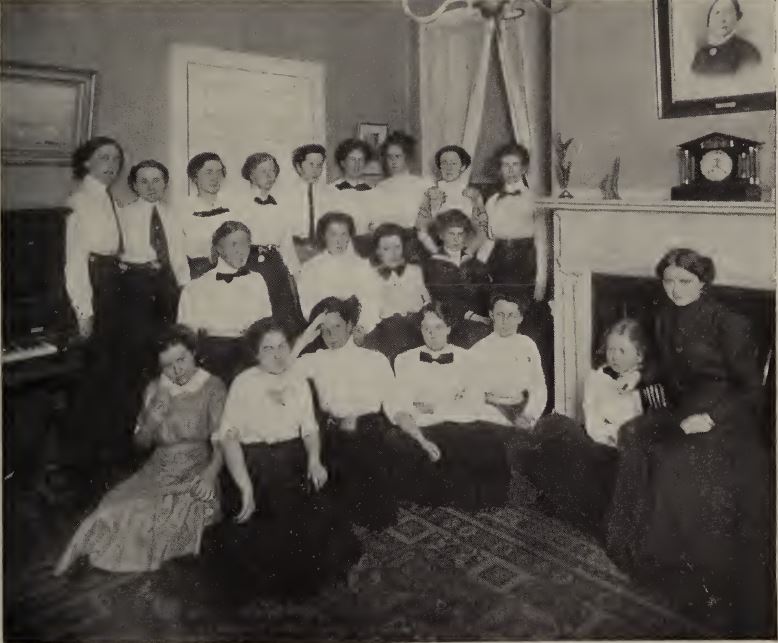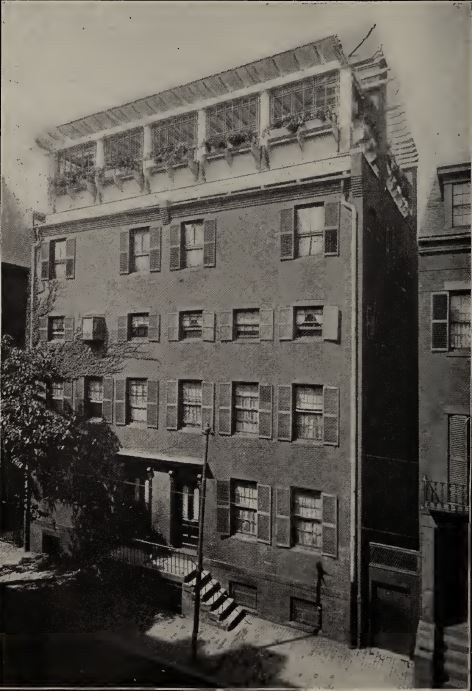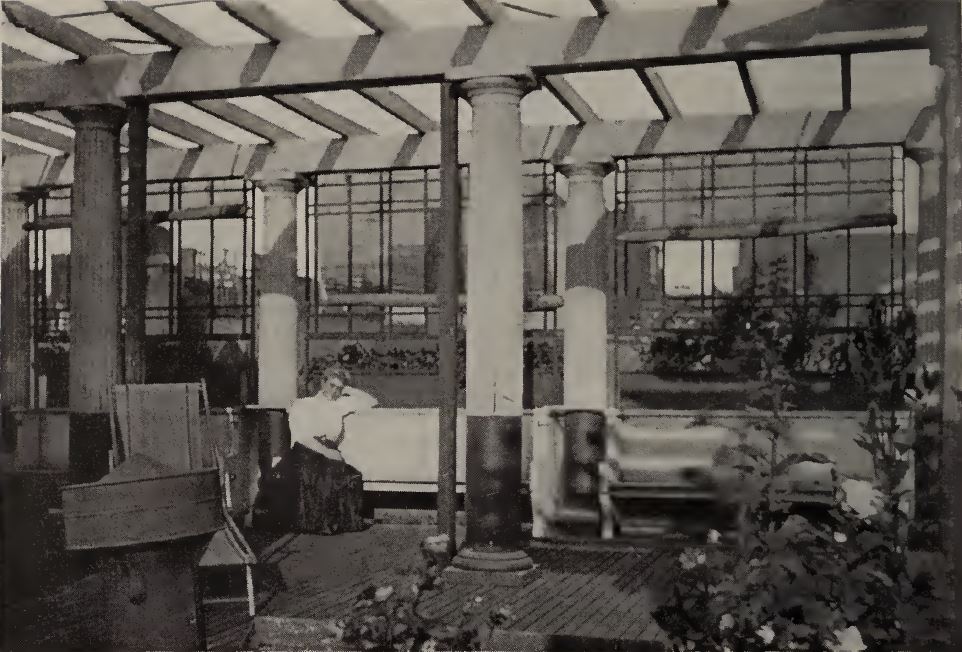By Susan Martin, Senior Processing Archivist
When processing a collection, I almost always find interesting little pockets of material that I wasn’t expecting. It happened again recently while I was processing the Hill family papers and came across a few folders related to an early 20th-century settlement house in Boston.

One member of the family, Nellie Frank Hill, was very active in the settlement house movement. I couldn’t find a lot of biographical details about Nellie, but I know that she was born in 1876, the fifth of eight children of farmer and produce dealer Charles Henry Hill of West Groton, Mass.
Nellie’s portion of the Hill family papers relates primarily to the Frances E. Willard Settlement, a home for working women in Boston. Nellie served variously as vice president, secretary, head resident, and general manager of the organization and worked closely with its founder and president, Caroline Matilda “Tillie” Caswell.
The Willard Settlement began in 1894 in a tenement house at 422 Hanover Street, where three rooms were set aside for women who worked at local factories to relax and socialize. The organization grew over the years and was officially incorporated in 1903, later moving to 44 Chambers Street in the West End of Boston. Urban renewal in the mid-20th century dramatically changed the area, and the street doesn’t even exist anymore, but you can find it on this map posted by Historic New England.

The Willard Settlement’s stated mission was: “providing, maintaining and supporting a home or homes for young working women or women earning very low salaries or those training for self-support who need temporary aid, and helping in any possible way those who are strangers and need assistance.” You can learn a lot about what that assistance looked like by reading this 1910 pamphlet, which contains photographs and details about the organization’s membership, activities, finances, etc.
Women earning $5.00 a week or less paid $3.00 for room, board, and laundry. Meetings and classes for residents—and for others in the community—were held at the neighboring clubhouse. Two classes specifically mentioned in the pamphlet included cobbling (for boys) and housekeeping (for girls). The clubhouse had an auditorium, gymnasium, library, pharmacy, assembly hall, and “sloyd” (craft) room. There was even a camp in Bedford, Mass. for 12-to-20-year-old girls that was named after Nellie.
The settlement house also boasted a truly impressive rooftop garden, which is where I would undoubtedly have spent most of my time if I’d lived there.

Of course, settlement houses and affiliated clubs had a darker side, as instruments for Christian proselytizing and “Americanization.” A 1911 book called Handbook of Settlements describes the Willard Settlement neighborhood this way: “A highly congested quarter of the West End. The people are largely Jews, with a sprinkling of Americans, Irish, Italians, and Negroes.” According to a 1919 issue of the Union Signal, published by the Woman’s Christian Temperance Union (WCTU), the settlement provided social services to a population that was “nine-tenths Jewish and one-tenth Italian.” The WCTU admitted that so-called Americanization was the “main work” of the movement.
The Willard Settlement was “avowedly temperance and Christian.” Daily prayers were mandatory for house residents, who were expected to maintain “good moral character.” Meanwhile, at the clubhouse, local immigrant and Jewish families—“neighbors of alien race and faith,” per the WCTU—could learn to speak and read English or improve their elocution (I presume to lose their accents). Their children were inculcated with “patriotism and loyalty.”
I couldn’t determine when the Willard Settlement officially closed its doors. I did find Nellie Hill and Tillie Caswell in the 1930 U.S. census. The two women were living together and running a health resort for women in Lake Maitland, Florida. After Tillie’s death in 1938, Nellie returned to Groton, Mass.

